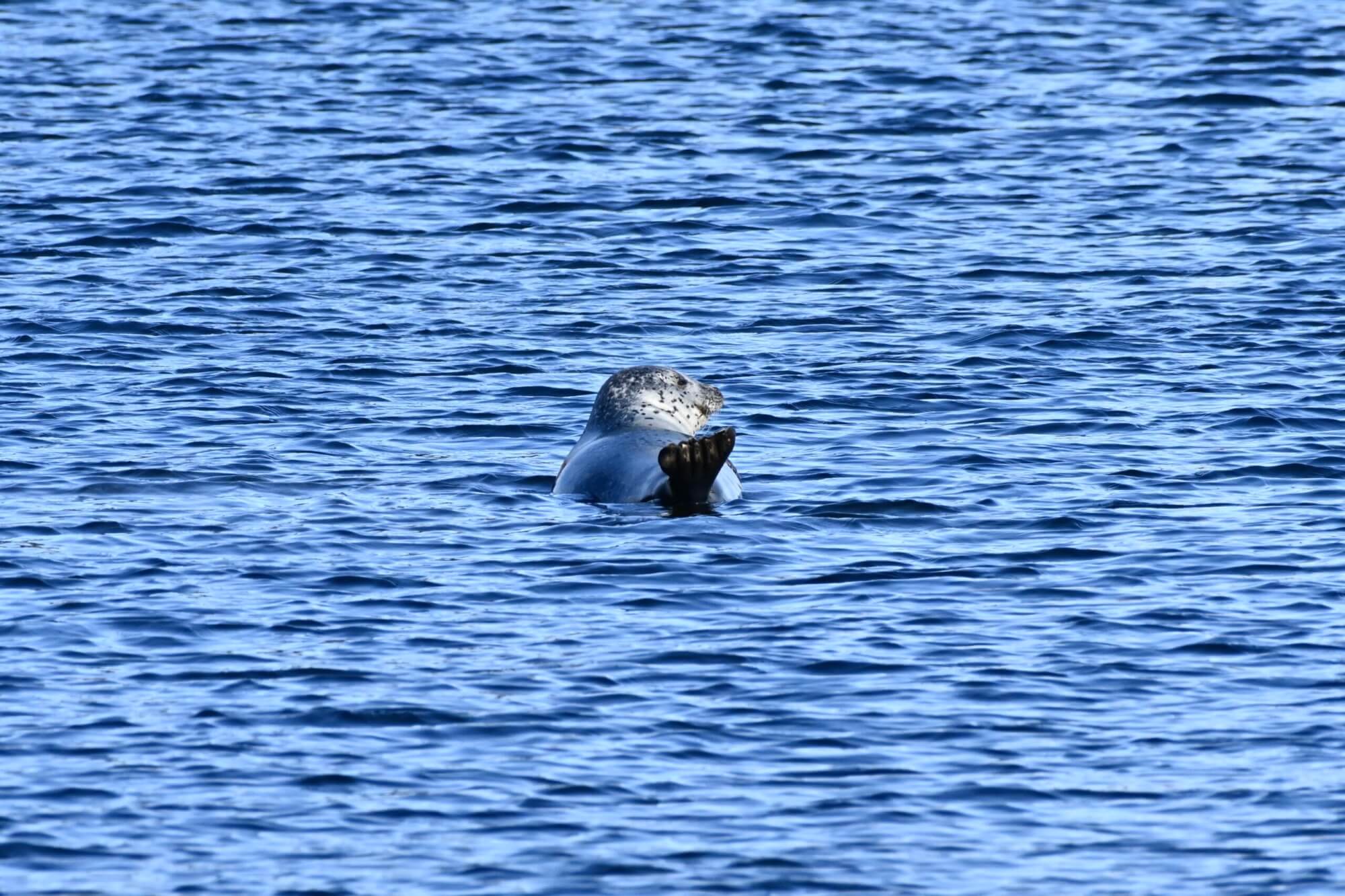Snow is slowly settling on the Quebec landscape and marine mammal sightings seem to be winding down with winter right around the corner. While many whales have probably already embarked on their annual migration, a few remain in the area. There are scattered reports of seals as well as white-sided dolphins and a handful of rorquals.
Winter breaths
A wildlife photographer documented the presence of over forty white-sided dolphins off the coast of Les Bergeronnes. The same day, he spotted two fin whales and the humpback whale H871. Quite a bit of action for November! Compared to previous years, he concludes that his observations are similar both in terms of species and numbers.
He also spotted a lone grey seal from Cap de Bon-Désir, while another Côte-Nord resident observed a harp seal. At the mouth of the Saguenay Fjord, a harbour seal was seen swimming quietly. One observer struck out on marine mammals, but was still pleased to see good numbers of birds.
Large spouts were observed from Godbout, where the marine mammal observation visualization tool Vigie Marine shows the presence of two fin whales on November 30. Will these individuals be heading south soon? Perhaps, but the species’ migration patterns still retain an aura of mystery. Between 2014 and 2021, a team from Fisheries and Oceans Canada tagged fin whales to study the species’ winter migration. Of the 28 tagged individuals, by mid-January just 5 were still being tracked. They all went to warmer waters (above 22°C), but each of them had completely different routes and destinations!
In the Manicouagan region, one enthusiast reported the presence of a pinniped. “Another harbour seal on the rock in the middle of Manicouagan. Whether it’s the same one or not, I have no idea! Since the low tide is not very low, it only has a short window to catch some rest!” Near Franquelin, a Côte-Nord resident spotted a grey seal as well as a minke whale.
On the opposite shore, there was a harbour seal near Rivière-du-Loup as well as a minke whale in Grande-Rivière, according to the Vigie Marine map. Perhaps the belugas were well camouflaged amidst the falling snow, but there wasn’t a single report of the species this week!
First right whale calf
The latest news indicates that the first right whale calf of the season has been observed. This is excellent news for this endangered species. Mating and calving for these cetaceans take place between November and February. Gestation lasts about 12 months while nursing lasts between 6 and 7 months, and sometimes up to a year and a half. Stay tuned for further updates in the months to come!
Thanks to all our collaborators!
Special thanks go out to all our observers who share their love for marine mammals with us! Your encounters with cetaceans and pinnipeds are always a pleasure to read and discover.
On the water or from shore, it is your eyes that give life to this column.
Odélie Brouillette
Marie-André Charlebois
Patrice Corbeil
Laetitia Desbordes
Diane Ostiguy
Renaud Pintiaux
Guillaume Savard
Andréanne Sylvain
Marielle Vanasse
And to all the others!
Additionally, we would like to acknowledge the following teams that also share their sightings:
Sept-Îles Research and Education Centre (CERSI)
Group for Research and Education on Marine Mammals (GREMM)
Marine Mammal Observation Network (MMON)
Quebec Marine Mammal Emergency Response Network (QMMERN)
Mingan Island Cetacean Study (MICS)
Would you also like to share your observations?
Have you seen any marine mammals in the St. Lawrence? Whether it’s a spout offshore or just a couple of seals, drop us a line and send your photos to [email protected]!








